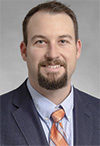Observation and reflection seem to be lost arts in a world dominated by phone screens, datasets and short attention spans. As we enter the grazing season, I challenge you to observe and reflect when watching cows graze. Below are just a few of many observations I have made when watching cows graze in the spring/summer grazing season.
Cattle selectively graze. Cattle rarely mow the paddock at a certain height like a mower. They prefer tender, leafy plants over stemmy, mature growth. Cattle are largely path-of-least-resistance eaters. They prefer what is easy to eat, such as tender, immature plants. Also, immature plants are higher in nutritive value compared to a mature plant. Unless we stock cattle at high density, they will selectively graze.
I have also observed ungrazed spots in the pasture. Many times, the areas left ungrazed were inhabited by a manure patty or a spiny weed. Sometimes, they are less desirable plant species like endophyte-infected fescue. Thus, dung beetles and soil microbes are important to cycle manure. Control of spiny, irritating weeds is warranted. Selecting and managing for desirable plant species helps increase pasture utilization.
Distance from water influences grazing pressure. If cattle are required to trail a long distance to water, they will not graze evenly. This is especially true in the summer. Undoubtedly, cattle will apply more grazing pressure near the water.
When planning a grazing system, water is likely the biggest influencer. Locating the waterer within 700 to 800 feet of the farthest area in the paddock will help keep grazing uniform. Obviously, this isn’t always economical, so having the ability to take water to different areas of the pasture can help increase pasture utilization. Pastures or paddocks that are a greater distance from a water source may be best utilized in the fall or when cattle are more comfortable traveling to the water.
Fly pressure makes cows huddle up and stop grazing. Cows will stand in water or mud to limit surface area exposure to flies. This results in less time grazing and resting. Ultimately, lower feed intake and more energy expenditure results in poorer performance. A good fly control program will help your cows spend more time grazing.
Accurate and thorough observation can quickly identify problems and pitfalls. Close observation and thoughtful reflection can also answer and solve many problems. Today, with so many distractions, many fail to observe. This can be a costly mistake, in my opinion. Observe your cattle. Observe the environment. Not only is it relaxing to watch cows grazing in a pasture, but thorough observation is one of the most valuable components to effective herd management.







